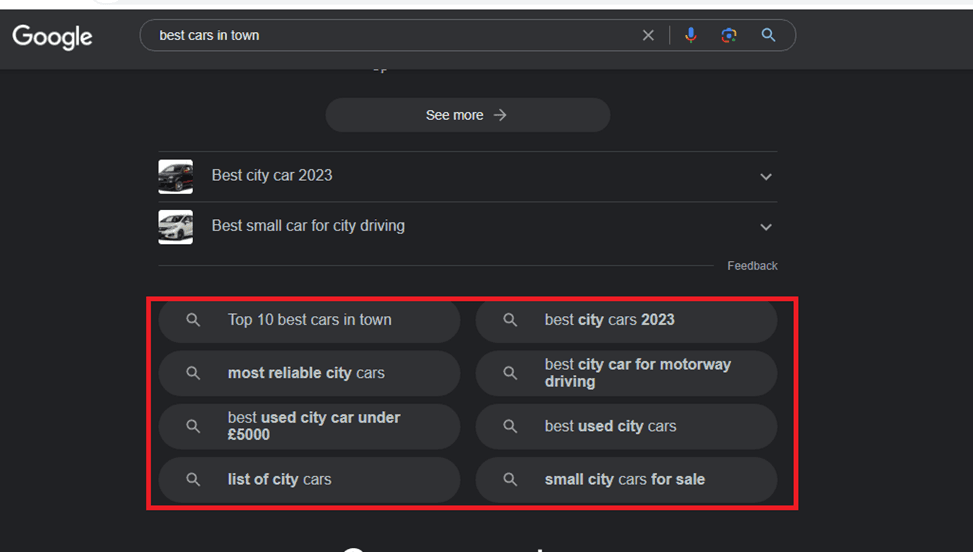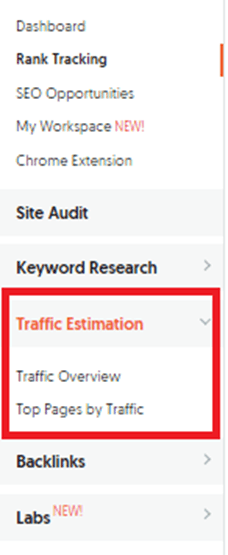Creating a website is easy nowadays; however, ranking it for your desired keyword is not a piece of cake. Especially if your website is new and doesn’t have much domain authority. There is a solution, and that is finding low-competitive keywords for your new website. If you are having trouble or have no idea about this, we have you covered!
Keywords aren’t the only factor for ranking. Google August 2022 help content update clearly says that if your content doesn’t provide any value to the user, it won’t get you results.
In this article, we will get you through a detailed guide about ways to find low-competitive keywords for your blog and website. Let’s check-in!
What are Low Competitive keywords?
You can easily understand the meaning of the phrase itself. Low-competitive keywords have lower competition and are easier to rank on SERPS. Moreover, these keywords have low volume. However, these keywords can play a part in the growth of your website.
Compared to competitive and small tail keywords, these keywords have higher chances of ranking. Long tail keywords tend to be longer phrases than the normal ones.
Let’s look at some examples related to these keywords:
- Best AI Tools for Digital Marketing
- How to make money on Pinterest
- How to find freelance clients
- Freelance Jobs for Graphic Designers
These examples show us that long-tail keywords have more words. They are usually four to five keyword phrases. If your website is new or your blog posts aren’t getting ranked, try focusing on long-tail keywords.
Why are Low competitive keywords Important?
Long tail keywords are essentially the keywords that have 4 to 6 words in length and low searches as compared to short tail keywords. High DA websites don’t write articles on these keywords because they’ll not get enough traffic from these keywords. Moreover, beginners take advantage of this and write articles on these keywords to start getting traffic on their blog. High-competition keywords have high demand and are not easy to rank if you are just starting your blog website.
Low-competitive keywords improve your overall SEO strategy and help you rank faster on SERPs. It increases your overall visibility and enhances the overall structure of your website. In addition, these keywords are particular and are searched because of the search intent. If a person Google search these keywords, they probably search it for buying, navigating, or information.
Steps to Find low competition keywords for SEO
Here are some steps to find low-competitive keywords for your blog and build your SEO strategy.
Brainstorm Keywords of your Topic
One of the first steps is to brainstorm keywords related to your topic, also known as seed keywords. Suppose you are writing about cars; here are some keyword ideas related to this topic:
- Best cars in town.
- Engine oils for cars.
- Are cars technology
- Tires for offroad
These are only examples of our topic. You can create an Excel file and start brainstorming different keyword ideas for your topic. Make sure these brainstormed keywords are related to each other. Moreover, as mentioned above, these keywords must be long and have more phrases.
Expand Ideas with a Keyword Research Tool
Once you have created a list of your keywords, it’s time to expand it with the help of keyword research tools. Many tools, such as Ahrefs, Ubersuggest, and SEMRush, are available in the market.
We use Ubersuggest as our keyword research tool because it’s more convenient and easier to understand. After signing up for Ubersuggest, click the keyword ideas option and enter your keyword.

The tool has given us more expanded ideas related to our keyword. You can also update the results. Furthermore, you can easily export these keywords and search for the best ones for your next content. Most of the keywords shown in the screenshot have low SEO difficulty, which means they have a high chance of getting ranked.
You can also search for more keyword ideas on Google. Check the screenshot below:

Find more high-volume Keywords
Volume indicates how much potential traffic can be driven to your website. The best keywords are those with high-volume and low-keyword difficulty, but these keywords aren’t easy to find. It might take in-depth research, but it will guarantee you good results. On Ubersuggest, you can filter volume, SEO difficulty, and CPC.
Let’s search for some keywords related to marketing. Here are some examples I searched on Ubersuggest.

Most of the long-tail keywords don’t have high volume; you can rely on the keywords that average volume. Low-competition keywords are often more specific and niche-oriented, catering to a smaller audience subset. Moreover, the keywords in the screenshot also have 36 to 50 KDR, which is great and has a good chance of getting ranked.
Keyword Difficulty
Keyword difficulty is crucial when targeting a specific keyword for your blog or website. High-competitive keywords have a high KDR ratio and volume, which are impossible to rank if your website is new and lacks domain authority.
Furthermore, you can filter keywords or SEO difficulty on Ubersuggest. Keyword difficulty percentage ranges from 1 to 100, and if the KDR is high, there is less possibility for the keyword to rank on Google SERP.
If above 69%, the keyword is much more difficult to rank on SERPs.
If between 35 to 49%, there is a high possibility of the keyword getting ranked.
If less than 14%, the keyword is easy to rank.
As mentioned above, we’re using Ubersuggest. These percentages depend upon the keyword tool that you’re using for searching.
On top of that, creating quality content is the key. It is indispensable for you to provide the readers with value and solve their problems. Please note that if your website is fresh and new, target the keywords with a low percentage of keyword difficulty.
Focus on Search Intent
Your keyword research strategy is already doomed if you don’t know your target audience and what they are searching for. If the keyword has an average volume and low KDR ratio, it doesn’t prove that it is right for your audience. The search intent of a keyword identifies the motivation and purpose of user search queries.
Let’s check out the forms of search intent:
Informational
It refers to someone seeking knowledge or information about a specific topic. These keywords contain “How to,” “what is, “tips for,” etc.
Navigational
It refers to someone looking to find a specific website or page such as “Facebook login,” “Netflix account,” etc.
Transactional
The transactional keywords include phrases like “Buy online,” “online order,” etc. It simply means that the user is looking to make a purchase.
Commercial
Users with commercial investigative intent are in the research or comparison stage of the purchasing process. Before deciding, they investigate several options and evaluate items or services. For instance, “best digital cameras,” “top-rated mobiles,” and “compare iPhone 14 vs Samsung Galaxy S22.”
Steal your Competitor’s Keywords
At last, we have got a shortcut for you. It is called stealing your competitor’s keywords. Well…that might sound illegal to you, but it isn’t. It is simple and easy to understand. Simply head over to Ubersuggest > Traffic Estimation and click on Traffic Overview.
In this section, enter the URL of your competitor’s site, and it will show the keywords it is ranking for. It will help you find low-competition keywords. You might also see highly competitive keywords used by your competitors, but you should focus on your topic-related keywords.

Long Tail Keywords vs Short Tail Keywords
Well, keyword Optimization does not end there. Keywords are divided into two types to use for SEO optimization correctly. These two types are long-tail keywords and small-tail keywords. Both types are two major weapons of target keywords, which play different roles in achieving the same purpose.
You must be assuming the difference between both types in word length, but there is much potential distinction between both to dig in. The comparison is presented with these important factors:
Keyword Competitiveness
How efficiently your keywords will help you to rank in organic research will determine keyword competitiveness. If a keyword reduces your competition, it is a win-win for you, as competitors won’t use these keywords, and you can dominate organic search competition.
However, long tail keywords are branched in supportive and topical keywords. Supportive ones are less trendy keyword variations for popular keyword research, and topical ones are popular in relevant domains. These keywords should be used according to keyword difficulty score to turn search engines in your favor, increase organic search and rank up.
In contrast, small tail keywords are highly competitive and might affect the keyword gap. It’s harder to dominate top-ranking pages and would require link-building for a long period.
Search Intent
When a person exactly know what he wants to find, he hops on specific keyword research rather than a broader keyword. Long tail keywords are these specific search terms for a query or want to find any specific blog post, e.g. best metal rods for constructing plant supports.
Whereas small tail keywords don’t clarify the intention. It can be a cluster of relevant keywords to the target seed keyword. These keywords can be applied to get general search queries on a topic or ideas for an event or trend, e.g. best metal rods.
Search Volume
Search volume determines the number of times a keyword is searched based on the average monthly search volume. When there is a higher search volume, it uncovers that most people are searching for that keyword. As small tail keywords are used for general searches, it caters to high search volume. At the same time, specified keywords will produce low search volume.
However, low search volume keywords benefit the target audience and rank more efficiently. but if your motive is to generate traffic on the page, leverage high-volume keywords as much as possible.
Search Traffic
This factor determines how much potential traffic your keyword can bring to your blog post, website content or social media post. Although, the main purpose of SEO strategy is to bring more traffic and uplift the conversion rates. This happens through increased organic search and page authority with the right keywords and content.
Keyword target is established to stimulate different types and quantities of traffic. Competitive keywords are low-hanging fruits to foster organic traffic because of their broader audience and generalized nature. But because there will be high competition, it might only target seed keywords but not the actual goal of the content. On the contrary, a low-competition keyword would bring down the traffic, but it can revamp the page authority for specific target keywords.
Audience Conversion
Low-competition keywords grab smooth conversions than clicks from the target audience. Long tail keywords are mostly used by searchers when they are finding any product and buying it. Like the example mentioned above, ” best metal rods for making plant supports,” there is more chance of more conversion per click. In contrast, high-volume keywords will skyrocket traffic. The conversion-traffic ratio will be less small tail keywords. Therefore it’s necessary to use both keywords side by side.
Paid Search
Paid search is also known as search engine marketing, where business advertisers show their ads with desired keywords. These ads are shown before the organic search results in SERP. The paid advertisers choose the list of keywords according to the search volume and their target audience.
Paid advertisers might take a backseat to use less competitive keywords due to fewer clicks. Therefore, paid advertisers mostly favor small-tail keywords due to high search volume and traffic.
Is Finding low-competition Keywords really this simple?
Finding low-competition keywords are difficult if you don’t know how to find them. Finding low-competition keywords might be hard-nut to crack; however, following the right strategy and ways won’t take hours.
One of the best ways to find these keywords is to leverage keyword research tools such as ahref, SurferSEO, and Ubersuggest. Furthermore, as these keywords contain more words, they aren’t easy to brainstorm.
Finding low-competitive keywords isn’t confusing but requires in-depth research and analysis. Of course, these keywords are easier to rank for, but it is also vital for you to focus on the competition and search demand of the keywords you are targeting.
Conclusion
Low-competition keywords are crucial if you’re just starting your website. It is also important for you to find keywords with the right strategy. Once you gain reputation and authority, you can shift towards short-tail keywords. We have described vital steps for finding long-tail keywords in the above article.
If you want to read more about making money, freelancing tips, and how-to-related articles, please visit Farazdev.com!




